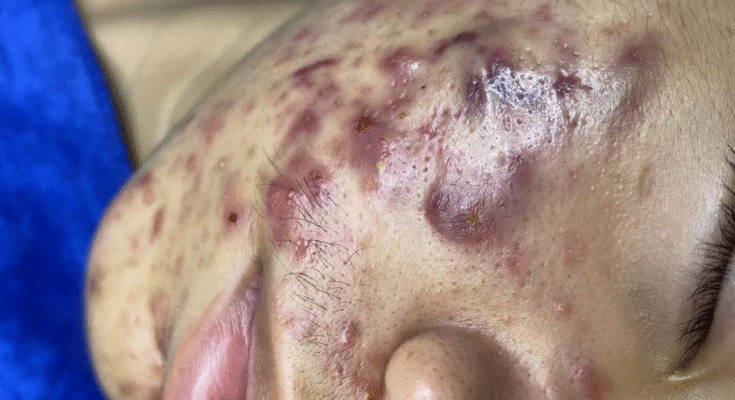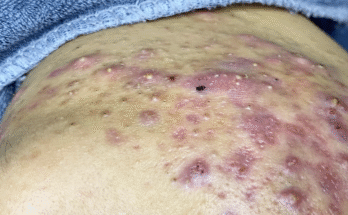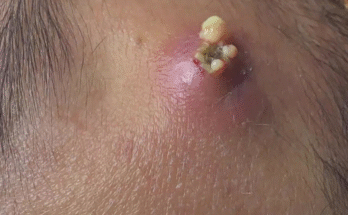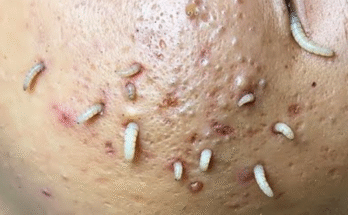Pimples can be frustrating, uncomfortable, and sometimes even painful. When one shows up unexpectedly, many people feel tempted to squeeze it, hoping for a quick fix. DIY pimple popping may seem harmless, and the internet is full of videos that make it look easy and satisfying. But what most people don’t realize is that popping a pimple at home creates a chain reaction beneath the surface of the skin—one that can lead to serious and long-lasting damage.
Before reaching for your fingers, it’s important to understand the hidden risks behind DIY pimple popping and why dermatologists strongly advise against it.
1. You Can Easily Cause Permanent Scarring
One of the biggest dangers of popping pimples at home is scarring. When you squeeze a pimple, you are applying force to the skin. If the pressure is too strong—or if the pimple isn’t ready—it can rupture beneath the skin’s surface.
This is called a subsurface rupture, and it causes deep inflammation that damages collagen. Once collagen breaks, the skin heals unevenly, leading to:
-
Ice-pick scars
-
Rolling scars
-
Boxcar scars
-
Raised scars
These scars can last a lifetime and often require expensive treatments like microneedling, laser therapy, or chemical peels to improve.
2. You May Trigger Dark Spots and Hyperpigmentation
Even if a pimple doesn’t scar, it can leave behind pigmentation issues known as post-inflammatory hyperpigmentation (PIH). When you pick or squeeze a pimple, the skin becomes injured, and this injury triggers melanin production.
This results in:
-
Dark spots
-
Red or brown marks
-
Slow-fading discoloration
For people with medium to dark skin tones, PIH can last months or even years. What started as a tiny pimple can turn into a much more noticeable mark.
3. You Risk Causing a Skin Infection
Hands are full of bacteria—even if they look clean. When you squeeze a pimple using your nails or fingertips, bacteria from your hands can enter the open wound.
This can lead to:
-
Painful inflammation
-
Redness
-
Pus-filled lesions
-
A spreading infection
Infections can also occur when people use unclean tools, such as bobby pins, needles, or tweezers, which are never safe to use on skin. Severe infections may require antibiotics or medical treatment.
4. You Can Cause Cysts and Nodules to Form
DIY pimple popping can push bacteria, oil, and debris deeper into the skin. Instead of clearing the pore, squeezing often forces everything further down.
This creates larger and more painful acne types such as:
-
Cysts – deep, inflamed, pus-filled bumps
-
Nodules – hard, painful lumps under the skin
These types of acne do not go away quickly. They can last for weeks or months and often require prescription medication to treat.
5. You Might Spread Bacteria and Create More Pimples
A common hidden risk of squeezing pimples is that it spreads bacteria to nearby pores. When a pimple pops, the bacteria inside can travel to other areas of the skin, causing new breakouts.
This leads to:
-
More frequent pimples
-
Clusters of acne
-
Worsening inflammation
Instead of treating one blemish, popping can create several new ones.
6. You Can Damage the Skin’s Natural Barrier
The skin’s protective barrier keeps moisture in and bacteria out. When you pop a pimple, you create a wound that breaks this barrier.
A damaged barrier results in:
-
Increased sensitivity
-
Dryness or peeling
-
Redness
-
Slower healing
-
Higher risk of irritation from skincare products
A weakened barrier can also lead to recurring acne, making breakouts harder to manage.
7. You Can Infect the “Danger Triangle” of the Face
Many people don’t know that the area between the corners of the mouth and the bridge of the nose is called the danger triangle. This region contains veins that connect directly to the brain.
Squeezing pimples in this area can increase the risk of:
-
Severe infections
-
Cellulitis
-
Sinus infections
-
Rare but serious complications
Although these cases are uncommon, they are dangerous enough that dermatologists strongly advise never popping pimples in this area.
8. You Could Misidentify the Skin Issue
Not every bump on the face is a pimple. DIY popping becomes even riskier when the bump is actually:
-
A cyst
-
A boil
-
Milia
-
A staph infection
-
An ingrown hair
-
Rosacea pustules
Attempting to pop these can make the condition much worse, cause spreading infection, or cause long-term damage.
9. You Interrupt the Skin’s Natural Healing Process
Your skin has a built-in healing system. Pimples often resolve on their own if left untouched. When you pop a pimple, you interfere with this natural process.
This can lead to:
-
Longer healing times
-
More redness
-
Repeated inflammation
-
A delay in recovery
A pimple that could have healed in 2–3 days may take weeks to recover after popping.
10. You Often Don’t Extract the Entire Pimple
Many people believe that once they squeeze out the white or yellow contents, the pimple is “done.” But this is rarely true.
Without proper technique, the remaining pus and bacteria stay trapped underneath the surface. This leads to:
-
A pimple that returns in the same spot
-
A larger and more painful lesion
-
Inflammation that spreads deeper
Trying to “finish the job” by squeezing repeatedly only increases the damage.
Final Thoughts
DIY pimple popping may feel satisfying for a moment, but the hidden risks make it one of the most damaging habits for your skin. Scarring, hyperpigmentation, infections, worsened breakouts, and long-term collagen damage are all possible consequences.
Instead of popping, the safer choice is to use dermatologist-approved alternatives like warm compresses, salicylic acid, benzoyl peroxide, hydrocolloid patches, and professional extractions when necessary.



